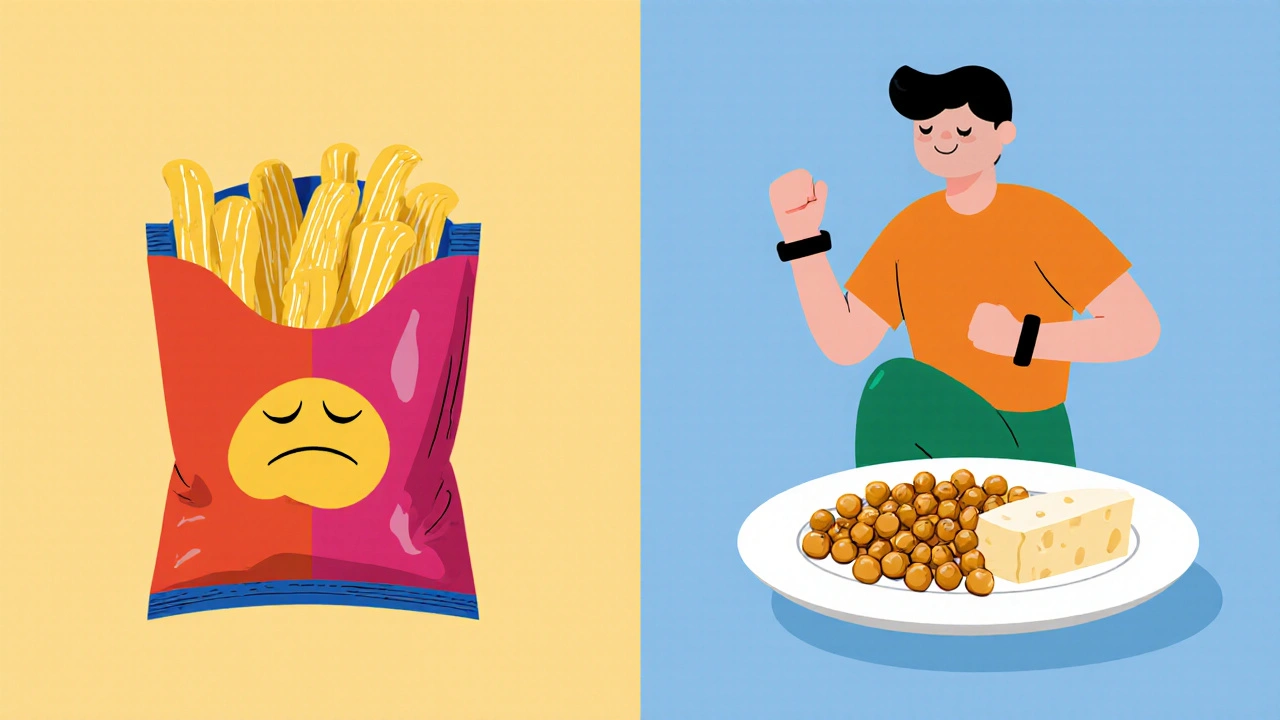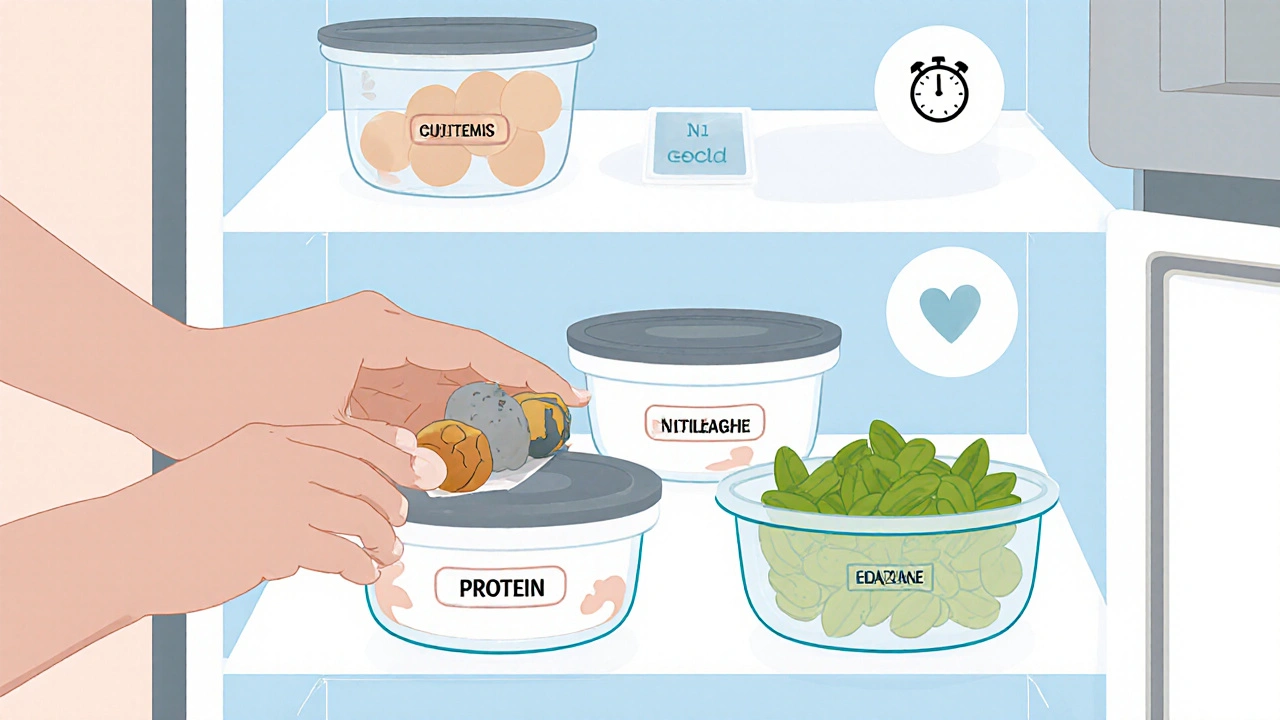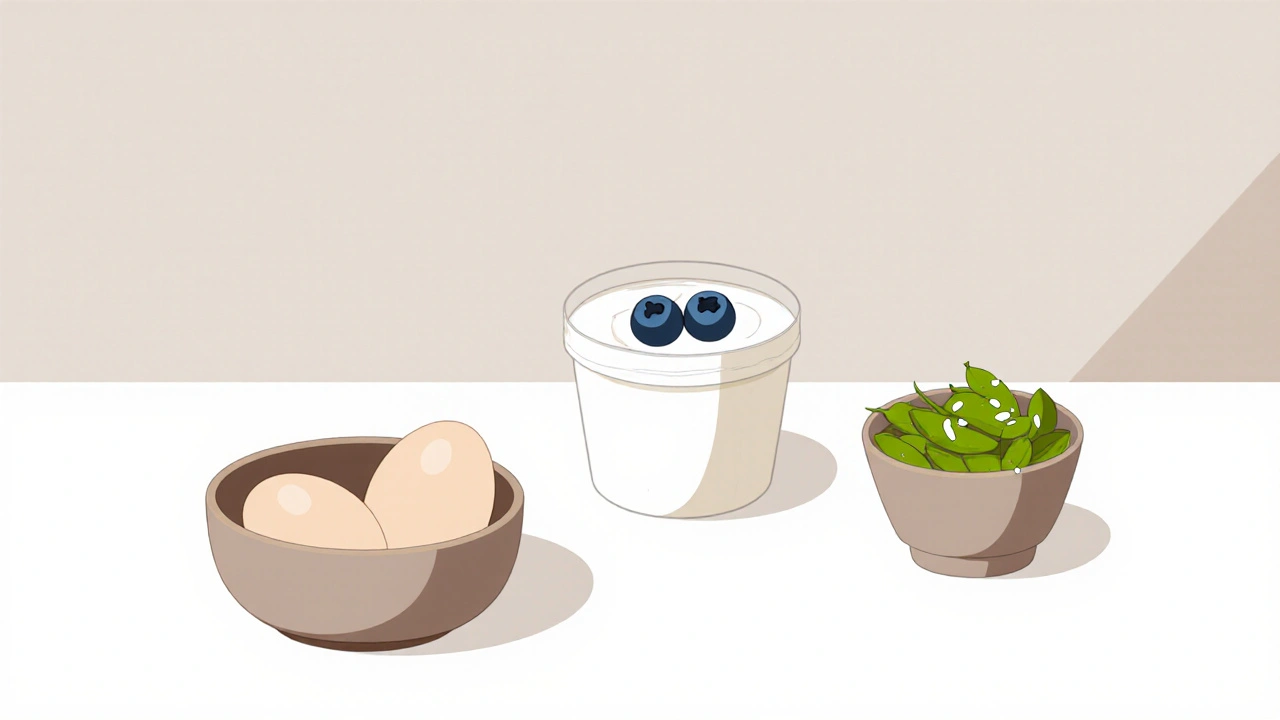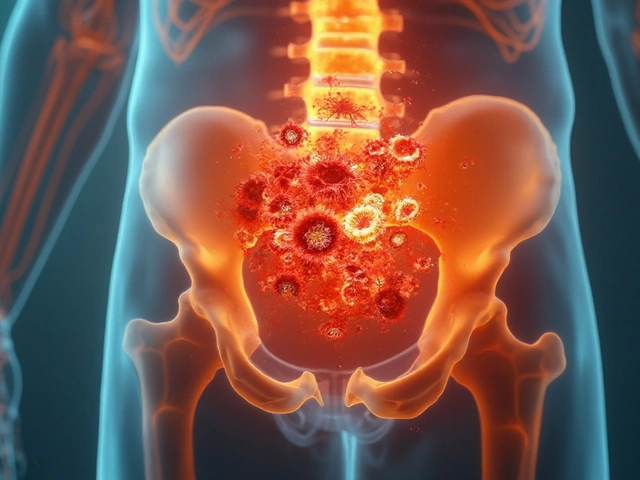Snacking doesn’t have to wreck your weight goals. In fact, the right snack can keep you full longer, stop cravings, and even help you burn more calories. The secret? High-protein, low-calorie options. These aren’t just trendy - they’re backed by science. Protein keeps your hunger hormones in check, stabilizes blood sugar, and helps preserve muscle while you lose fat. And when you pick snacks under 200 calories with 10-20g of protein, you’re making a smart move that actually works.
Why Protein Snacks Work Better Than Anything Else
Not all snacks are created equal. A bag of chips might satisfy your crunch craving, but it leaves you hungry again in an hour. A hard-boiled egg? That’s different. Protein triggers the release of hormones like PYY and GLP-1, which tell your brain, “I’m full.” Studies show this effect is 15-25% stronger than with carbs or fats. That’s why people who snack on protein report fewer cravings and eat less at their next meal - sometimes 12-15% less.
Protein also takes more energy to digest. While carbs and fats use up 5-10% of their calories just to be broken down, protein burns 20-30%. That’s called the thermic effect of food. So even the calories you eat from protein don’t all get stored - some get burned off as heat. Combine that with better satiety, and you’ve got a snack that helps you lose weight without feeling deprived.
Top 10 High-Protein, Low-Calorie Snacks (Under 200 Calories)
Here are real, doable snacks that deliver 10-25g of protein without blowing your calorie budget. All are under 200 calories and easy to find or make.
- Hard-boiled eggs - 2 eggs = 12g protein, 156 calories. Keep a batch ready in the fridge. Sprinkle with salt, pepper, or everything bagel seasoning.
- Non-fat Greek yogurt - 150g (about 2/3 cup) = 15g protein, 90 calories. Add a handful of blueberries for fiber and antioxidants.
- Cottage cheese (1% or fat-free) - 1/2 cup = 14g protein, 90 calories. Mix with pineapple chunks or sliced tomato and black pepper.
- Edamame - 1 cup (shelled) = 17g protein, 190 calories. Buy pre-cooked and frozen. Just thaw and sprinkle with sea salt.
- Roasted chickpeas - 1/2 cup = 7g protein, 6g fiber, 135 calories. Toss canned chickpeas with olive oil, paprika, and garlic powder. Roast at 200°C for 25 minutes.
- Low-sodium turkey or chicken jerky - 1 oz (28g) = 10-12g protein, 70-90 calories. Watch out for added sugar - aim for under 3g per serving.
- String cheese - 1 stick = 7g protein, 80 calories. Pair with a few almonds for extra crunch and healthy fats.
- Hard-boiled egg muffins - 2 muffins = 14g protein, 160 calories. Mix eggs with spinach, diced bell pepper, and a splash of milk. Bake in a muffin tin for 20 minutes.
- Tuna salad in lettuce cups - 1 can (in water), drained + 1 tbsp Greek yogurt + lemon juice = 22g protein, 140 calories. Serve in romaine leaves. No bread needed.
- Protein balls (homemade) - 1 ball (made with 1 scoop protein powder, 2 tbsp oats, 1 tbsp flaxseed, cinnamon) = 15g protein, 170 calories. Keep in the fridge. No added sugar.
Plant-Based vs. Animal-Based: What’s Better?
You don’t need animal products to get enough protein. But not all plant proteins are equal. Animal sources like eggs, dairy, and meat are “complete” - they contain all nine essential amino acids your body can’t make on its own. Their Protein Digestibility Corrected Amino Acid Score (PDCAAS) is 1.0, the highest possible.
Plant proteins like beans, lentils, and tofu usually score lower - around 0.7-0.8. That doesn’t mean they’re bad. It just means you need to combine them. For example, hummus (chickpeas) + whole wheat pita gives you a complete amino acid profile. Edamame is one of the few plant foods that’s nearly complete on its own.
Here’s a quick comparison:
| Snack | Protein (g) | Calories | Fiber (g) | Added Sugar (g) |
|---|---|---|---|---|
| Chicken breast (85g) | 26 | 140 | 0 | 0 |
| Firm tofu (100g) | 9 | 70 | 1 | 0 |
| String cheese (1 stick) | 7 | 80 | 0 | 0 |
| Roasted edamame (1 cup) | 17 | 190 | 8 | 0 |
| Protein bar (RXBAR, chocolate) | 12 | 210 | 5 | 13 |
| Quest bar (blueberry) | 20 | 190 | 12 | 1 |
Notice something? The chicken breast gives you more protein per calorie than tofu. But edamame gives you 8g of fiber - something animal proteins don’t offer. Fiber slows digestion and keeps you full even longer. So if you’re plant-based, pair your protein with veggies, whole grains, or seeds to get the full benefit.

What to Avoid: The Hidden Traps
Not every “high-protein” snack is healthy. Many protein bars and shakes are loaded with sugar alcohols, artificial sweeteners, or hidden sugars. Quest bars, for example, have only 1g of sugar - but 23% of users report bloating or stomach upset from sugar alcohols like erythritol. RXBARs taste great and have clean ingredients, but they get 13g of sugar from dates. That’s not “natural” in the way you think - it’s still sugar, and it spikes blood sugar.
Jerky? Watch the sodium. One ounce can have 500-700mg - that’s nearly a quarter of your daily limit. If you’re watching your blood pressure, choose low-sodium versions or make your own.
And don’t fall for “protein bagels” or “protein cookies.” They’re often just regular baked goods with a scoop of powder mixed in. They still have refined flour, oil, and sugar - and you’re better off eating whole foods.
How to Make This Easy (No Cooking Required)
Time is the biggest reason people quit healthy snacking. You don’t need to spend hours prepping. Here’s how to do it in 15 minutes a week:
- Boil a dozen eggs on Sunday. Peel and store in a container with a damp paper towel on top - they stay fresh for 5 days.
- Buy pre-portioned cottage cheese cups or single-serve Greek yogurt.
- Keep a bag of frozen edamame in the freezer. Microwave for 2 minutes, sprinkle with salt.
- Portion out 2 tbsp of roasted chickpeas into small containers.
- Make a batch of protein balls (recipe below) and store them in the fridge for 2 weeks.
Want to go further? Try BBC Good Food’s mason jar protein pots: layer Greek yogurt, berries, chia seeds, and a sprinkle of granola. No spoon needed - just grab and go.

Pro Tips for Maximum Results
Here’s what the experts say about getting the most out of your snacks:
- **Aim for 15-20g protein per snack.** That’s the sweet spot for triggering muscle repair and fullness. More than 30g doesn’t add extra benefit.
- **Pair protein with fiber.** Edamame, chickpeas, and berries are perfect. Fiber + protein = longer-lasting fullness.
- **Snack between meals, not instead of them.** Protein snacks should fill gaps, not replace balanced meals.
- **Drink water.** Sometimes thirst feels like hunger. Have a glass before you snack.
- **Avoid sweet snacks after 6 PM.** Sugar even from dates can disrupt sleep and insulin sensitivity if eaten late.
And here’s a little-known trick: adding a few berries to your cottage cheese or yogurt boosts muscle protein synthesis by 18%, according to a 2023 study. The polyphenols in berries work with protein to help your muscles rebuild faster.
Real People, Real Results
On Reddit’s r/loseit, users consistently rank cottage cheese with berries as the #1 snack for hunger control. One user wrote: “I used to snack on granola bars and crash by 3 PM. Now I have 1/2 cup cottage cheese + 1/2 cup blueberries. I don’t even think about food until dinner.”
MyFitnessPal data shows hard-boiled eggs are the most logged high-protein snack - over 2 million times a month. Greek yogurt is second. These aren’t fancy. They’re simple. And they work.
Even the texture matters. People report cottage cheese bark (cottage cheese spread thin, frozen, and broken into chunks) is more satisfying than protein bars. Why? Crunch. Mouthfeel affects how full you feel - even if the calories are the same.
Final Thought: It’s Not About Perfection
You don’t need to eat perfect snacks every day. But if you swap one sugary snack for a high-protein one - say, a cookie for a hard-boiled egg - you’re already ahead. Protein doesn’t just help you lose weight. It helps you feel stronger, steadier, and more in control. And that’s the real win.
Can I eat protein snacks if I’m trying to lose weight?
Yes - protein snacks are one of the best tools for weight loss. They reduce hunger, lower cravings, and help you eat fewer calories overall. Studies show people who snack on protein consume 12-15% less at their next meal. Just keep portions under 200 calories and avoid added sugars.
What’s the best high-protein snack under 100 calories?
A single hard-boiled egg (78 calories, 6g protein) or a string cheese stick (80 calories, 7g protein). Both are simple, portable, and require zero prep. For plant-based, try 1/4 cup roasted chickpeas (68 calories, 3.5g protein) - just add a pinch of smoked paprika.
Are protein bars a good option?
Some are, but many aren’t. Look for bars with at least 15g protein, under 5g added sugar, and fewer than 5 ingredients. Avoid sugar alcohols like maltitol or erythritol if you’re sensitive. Quest bars are good for low sugar but may cause bloating. RXBARs have clean ingredients but are high in natural sugar from dates. Homemade protein balls are often better.
How much protein should I aim for per snack?
15-20g per snack is ideal for most adults. This amount triggers muscle repair and fullness without overwhelming your digestion. Eating more than 30g at once doesn’t give extra benefits - your body can’t use it all at once.
Can I eat these snacks if I’m vegetarian or vegan?
Absolutely. Edamame, roasted chickpeas, tofu cubes, and plant-based protein balls are all excellent. Combine beans with whole grains (like hummus + whole wheat pita) to get all essential amino acids. Look for fortified plant yogurts with added protein - some now have 12-15g per serving.
Why do I feel bloated after eating protein snacks?
It’s often from sugar alcohols (like erythritol or maltitol) in protein bars or shakes. Try switching to whole food snacks like eggs, yogurt, or edamame. If you’re using protein powder, choose unflavored collagen peptides - they dissolve completely and rarely cause digestive issues. Drink plenty of water and increase fiber slowly.
Is it better to snack before or after a workout?
After is better for muscle recovery. A snack with 15-20g protein within 45 minutes of working out helps rebuild muscle. Before a workout, stick to something light and easy to digest - like a banana with a spoon of peanut butter. Heavy protein snacks before exercise can cause discomfort.






1 Comments
They don't want you to know this, but protein snacks are a Big Pharma scam to keep you buying supplements while they sell you insulin. The real secret? Your body only needs 20g of protein TOTAL per day - everything else is just marketing. They're making you think you need 15g per snack because they're selling you protein powder that's laced with lithium to make you docile. I've seen the documents. Look up Project SnackWatch. The FDA knows. They just won't tell you.
And don't get me started on edamame. That's a GMO soy trap from China. They put fluoride in it to numb your critical thinking. Eat meat. Real meat. Not this plant nonsense.
They're coming for your eggs next. Mark my words.